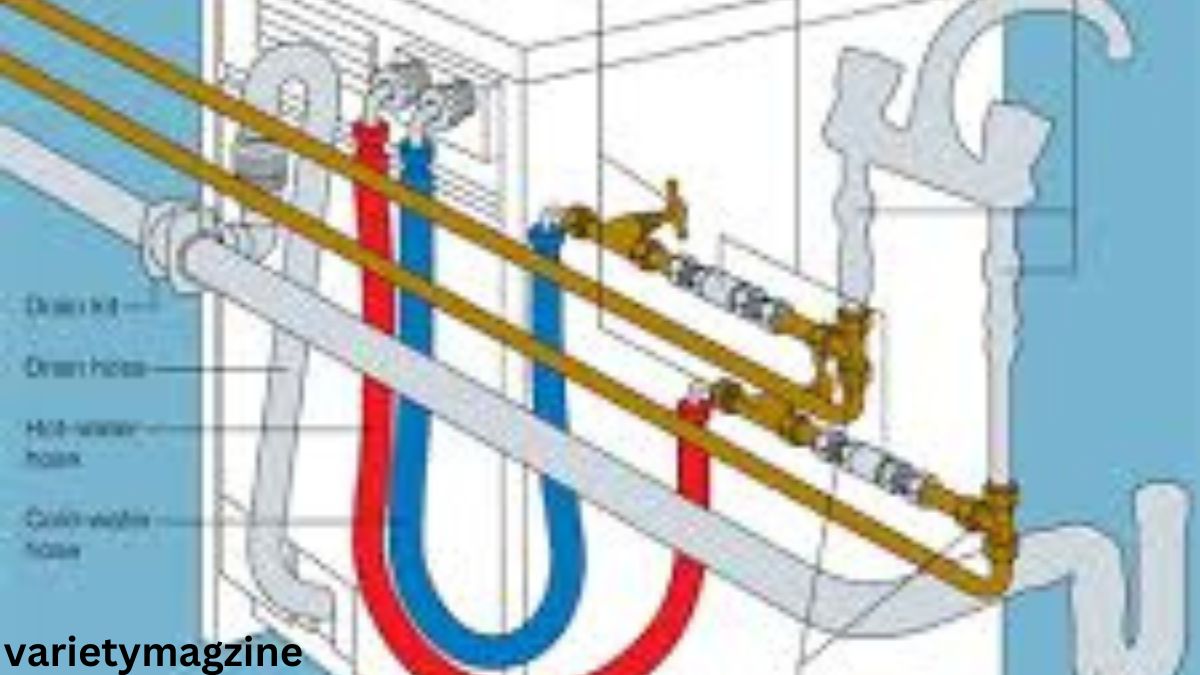Are you tired of dealing with a washing machine that constantly overflows or drains slowly? Finding the right drainage option for your washing machine can make all the difference in keeping your laundry routine running smoothly. In this ultimate guide, we will explore different drainage options, their pros and cons, as well as provide tips on choosing the best solution for your home. Say goodbye to water woes and hello to hassle-free laundry days!
Types of Drainage Options
When it comes to washing machine drainage options, there are a few different choices to consider for your home. One common option is a standpipe, which is a vertical pipe that connects the washing machine drain hose to the plumbing system. Standpipes are usually installed next to the washing machine and provide a direct route for water to flow out.
Another popular drainage option is a laundry sink, where the washing machine drain hose empties into a utility sink. This setup allows you to catch lint and debris before it enters your plumbing system, preventing potential clogs down the line.
If you don’t have access to a standpipe or laundry sink, an alternative option is using a floor drain. Floor drains are typically found in basements or utility rooms and provide an outlet for water from the washing machine.
washing machine drainage options has its own advantages and considerations based on your home’s layout and plumbing setup. Take these factors into account when choosing the right drainage solution for your washing machine needs.
Pros and Cons of Each Option
When it comes to washing machine drainage options, there are a few choices to consider, each with its own set of pros and cons.
One common option is the standpipe method, which involves draining the washer into a vertical pipe connected to your plumbing system. This method is relatively easy to install and doesn’t require any special equipment. However, standpipes can be prone to clogging if not maintained properly.
Another option is using a laundry sink for drainage. This allows for better water drainage and provides an additional space for handwashing or soaking clothes. On the downside, installing a laundry sink can be more complex and may require professional help.
A popular choice among homeowners is utilizing a floor drain for washing machine drainage. Floor drains are convenient as they eliminate the need for any extra plumbing work. Yet, they can sometimes cause odors if not cleaned regularly.
Consider these pros and cons when selecting the right washing machine drainage option for your home!
How to Choose the Right Drainage Option for Your Home
When it comes to choosing the right drainage option for your home, there are a few factors to consider. First, think about the layout of your laundry room or area where the washing machine is located.
Consider whether you have easy access to existing plumbing lines or if modifications will be needed. Next, evaluate the space available for different drainage setups – whether a standpipe, utility sink, or floor drain would work best.
Additionally, think about your DIY skills and comfort level with plumbing projects. Some drainage options may require professional installation due to complexity or building codes.
Consider potential future needs – choose a drainage option that not only meets your current setup but can also accommodate any changes in appliances or room layout down the road.
DIY vs Professional Installation: What You Need to Know
When it comes to setting up your washing machine drainage system, you have the choice between a DIY installation or hiring a professional.
DIY installation can be cost-effective and give you a sense of accomplishment. However, it’s important to have some plumbing knowledge and skills before attempting this task. Without proper expertise, mistakes could lead to leaks or improper functioning.
On the other hand, opting for professional installation ensures that the job is done correctly by trained professionals. They can assess your home’s layout and plumbing system to determine the best drainage setup for optimal performance.
Consider factors like your comfort level with plumbing tasks, time constraints, and budget when deciding between DIY and professional installation. Choosing the right option will guarantee efficient washing machine drainage in your home.
Maintenance Tips for Proper Washing Machine Drainage
To ensure proper washing machine drainage, regular maintenance is key. Start by inspecting the drain hose for any clogs or kinks that could impede water flow. Ensure the hose is securely connected to both the machine and the drainage pipe to prevent leaks.
Periodically clean out the lint trap in your washing machine to prevent build-up that can lead to drainage issues. Additionally, consider using a washing machine cleaner once a month to keep internal components free from residue buildup.
Avoid overloading your washing machine as this can strain the drainage system and cause blockages. Be mindful of what you wash – avoid items like rugs or heavy blankets that can put extra stress on the machine’s drainage capabilities.
If you notice any unusual noises during draining or detect foul odors coming from your washing machine, it may be time to call in a professional for further inspection and potential repairs.
Conclusion
As we wrap up our exploration of washing machine drainage options, it’s essential to remember the importance of proper maintenance. Regularly inspecting and cleaning your machine’s drain hose can prevent clogs and water backups. Additionally, considering factors like your home layout and plumbing system is crucial when selecting the right drainage option.
Whether you opt for a standpipe, laundry sink, or floor drain for your washing machine drainage, each choice has its own set of advantages and limitations. DIY installation may be suitable for some homeowners who are handy with tools, but professional installation ensures precision and expertise in complex setups.
To keep your washing machine running smoothly and efficiently, follow manufacturer guidelines for detergent use and load size. And don’t forget to check for any leaks or unusual noises during operation – these could indicate potential drainage issues that need attention.
By staying informed about the various drainage options available and implementing proper maintenance practices, you can ensure hassle-free laundry days ahead!
FAQs
Q: Can I use a regular drain pipe for my washing machine?
A: It is recommended to use a dedicated drain line for your washing machine to prevent clogs and backups.
Q: How often should I clean the washing machine drainage system?
A: Regular maintenance is key. Clean the lint trap, check hoses for blockages, and ensure proper water flow at least once every few months.
Q: Should I hire a professional plumber to install a new drainage system?
A: It depends on your comfort level with DIY projects. If you are unsure or have complex plumbing needs, it’s best to seek professional help.
Q: What should I do if my washing machine drains slowly or overflows?
A: Check for clogs in the drainage hose or pipe first. If the issue persists, consider calling a plumber to assess and fix any underlying problems.
Ensuring proper washing machine drainage is essential for efficient laundry routines and preventing potential water damage in your home. By understanding the different drainage options, their pros and cons, as well as how to choose the right one for your needs, you can maintain a hassle-free laundry experience. Whether opting for DIY installation or seeking professional assistance, regular maintenance will help keep your washing machine running smoothly. Remember these tips to ensure effective washing machine drainage in your home!










